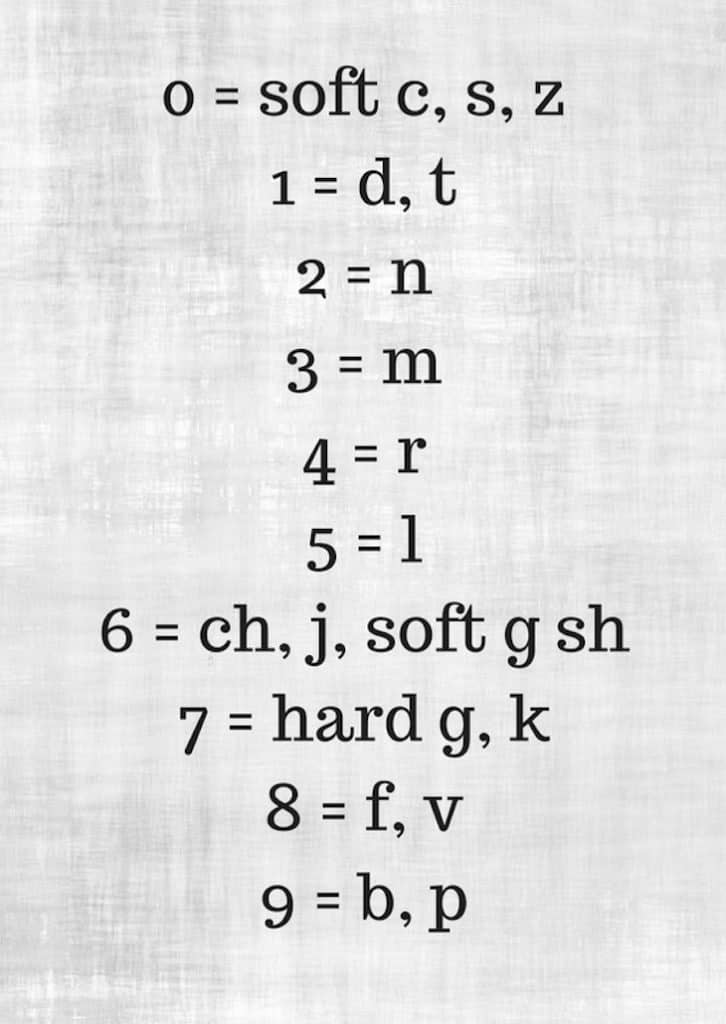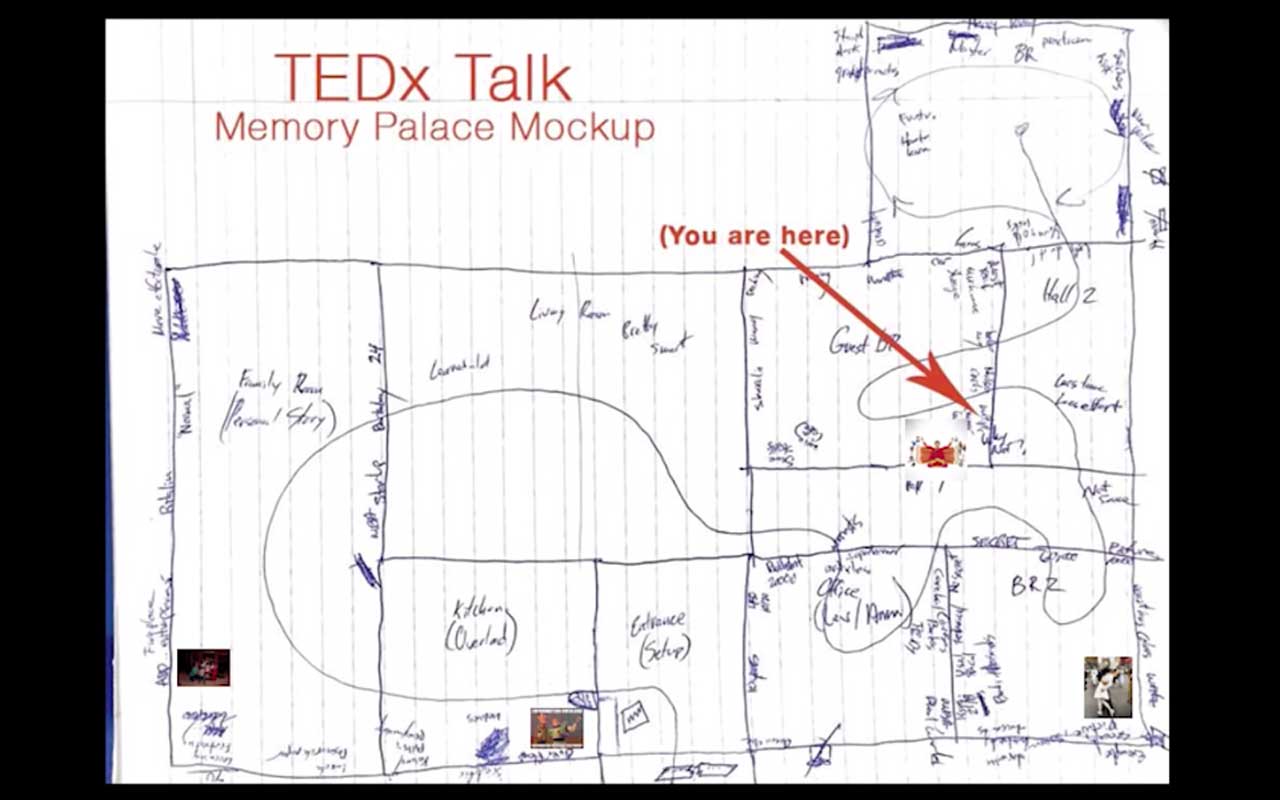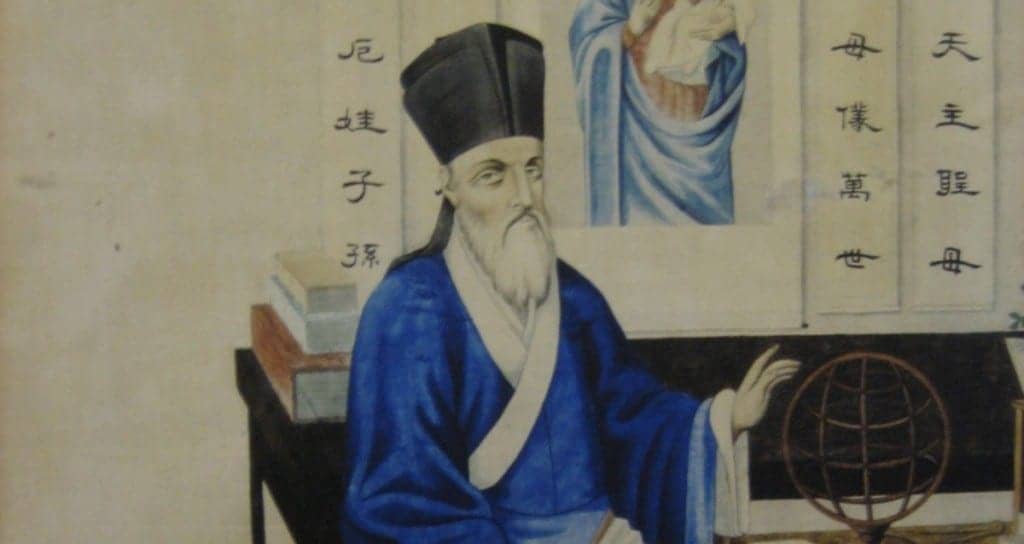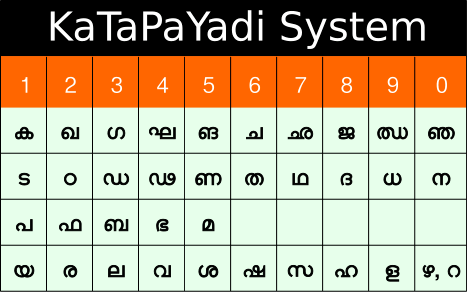Lépjen offline állapotba az Player FM alkalmazással!
7 Powerful Memory Training Techniques From Around The World
Manage episode 440811862 series 3235856
 Memory training techniques involve more than just training.
Memory training techniques involve more than just training.
In fact, the use of mnemonics is an ancient art, craft and science practiced around the world.
And it’s not new. People have been training their memory for thousands of years.
The best part?
They’ve left many wonderful tips we can use to learn, memorize and recall more information in ways that are fast, easy and fun.
Whether we’re talking about Matteo Ricci’s recipe to overcome forgetfulness or French scholar Aimé Paris’ Mnemonic Major System, strengthening the cerebral muscles of memory has mattered to people across time and around the world.
In fact, there are numerous techniques used worldwide by memory champions as well as amateurs to train their brain.
On this page, I’ll share the best memory training techniques I know from my years of experience teaching mnemonic strategies.
As a PhD in Humanities, memory is more than just a research focus for me. I’m also a practicing mnemonist who uses these techniques myself.
Ready to train?
Let’s dive in!
7 Memory Training Techniques You Need To Master
As we go through this list, keep in mind that there’s no particular order of importance.
They all matter and each one is well-worth spending time learning.
The only catch is that a bit of time does need to be spent. But it will be worth it once you see the results of better memory flowing into your life.
One: Mnemonic Linking
Most people start with creating mnemonic links. It’s an excellent place to start training, as advised by some of the best memory experts (Harry Lorayne, Tony Buzan, myself and many more).
What is it?
Linking involves assigning vivid associations between what you want to learn and information you already know.
For example, let’s say you need to remember a list of words like apple, book and dog.
Since an apple is basically abstract until you think of a specific apple, you would make a mnemonic link with an Apple computer. You would then imagine an Apple computer interacting with a specific book, such as your family Bible in the jaws of your favorite dog.
By making the associations specific like this, you’re training your mind and memory to remember better. This core memory training technique is the basis of most Memory Palace books and I highly recommend that you master it.
Two: Peg Systems
Basic linking is something you can do on the fly.
However, if you really want to train, learn the pegword method and develop your associations in advance.
That’s the core difference between linking and pegwords: linking is done on the fly. Pegs involve applying mnemonic images you’ve already decided upon.
How to get trained with advanced pegs?
Set some time aside and learn each of these mnemonic systems:
If you learn them in that specific order, you’ll advance a lot faster in your memory training efforts.
Three: Keyword Mnemonics
People use the term “keyword” differently in the world of memory training techniques.
In some cases, they mean the pegword method we’ve just discussed. In other words, they are applying their pegs as keywords they will use in the form of associations.
In other cases, people mean that they are looking at memorizing a word like “potato” and using a “pot” as an association – literally someone smoking pot that looks like a potato.
Is this really different than linking or using a pegword system? Not so much.
However, it gets much more strategic when you are searching for the main points in a book or article.
In this case, you can memorize two or three words and remember a lot more thanks to mnemonic compression and decompression.
The keyword mnemonic technique also applies to memorizing a speech. For example, when I memorized my TEDx Talk, I didn’t memorize every single word.
No, I just pulled out the keywords and memorized those. That made the process much faster, and as you can tell by the millions of views it has garnered, it was a success.
For your memory training activities, I highly recommend memorizing either a speech or commit some poetry to memory. It will rapidly teach you the power of reducing passages down to keywords.
Four: Alphanumeric Mnemonics
The core idea of alphanumerics has already been covered in the pegword section. To use it, you simply link consonants to the digits 0-9.
Here’s the exact pattern I use:

Once you have the Major System in place, you can build it out to something like Alex Mullen’s PAO system. Fun fact: It is precisely this alphanumeric number system that enabled him to memorize a deck of cards in less than 17 seconds!
I’m not that fast myself, but it is the system I use in my memdeck work using the Tamariz stack as a card magician.
These are good questions and I believe everyone should expose themselves to as many memory experts as possible.
Please don’t get the wrong idea. This system isn’t just about training yourself to memorize numbers like pi or playing cards.
Like honing any other skill or strengthening your body’s core muscles, it’s about hacking your brain to remember anything. To do that, all you need is time to study the techniques and practice.
People have been doing that for thousands of years, as Lynne Kelly has demonstrated very well in her book, The Memory Code.
We don’t know how old this alphanumeric system is, but it goes at least as far back as the katapayadi, when it looked like this:
Five: The First Letter Mnemonic Technique
If you ever want to experience a neat effect, try this:
Take a poem or sentence and write out the first letter of each word. Here’s what I mean using the opening of Shakespeare’s Sonnet 59 (If there be nothing new, but that which is hath been before…”
In this example, only the first letter of each word is represented.
To work with this memory training technique, you simply look at the letters and mentally fill-in-the-blanks.
As a memory technique, this approach is related to Cloze tests. In this laboratory study of the First Initial mnemonic, students who used it showed significantly better recall.
Although I would never use this approach to memorize something mission critical like a speech, it is a good training exercise. I use it a couple of times a year.
Six: Story-Telling For Better Memory
As Lynne Kelly has demonstrated in The Knowledge Gene, humans have used stories to remember information for thousands of years.
We know this well from the story of Simonides of Ceos and how Renaissance memory masters like Robert Fludd advised us to use stories in particular ways.
I personally use the Story Method in highly targeted ways and highly recommend you train with it.
Seven: The Memory Palace Technique
One of the best ways to train your memory is to use the Memory Palace technique. Also known as the method of loci, it uses spatial memory to help you organize how you will retrieve information.
To use it, recall a familiar location and establish a path within it – you can use the journey method to do this using either indoor or outdoor locations.
Then, using spaced repetition and one of the association techniques discussed above, you revisit the images you placed along the journey. Soon, you’ll have the information you want to remember in long-term memory.
That’s exactly what I did to memorize my TEDx Talk using keywords after making a quick sketch of a familiar location.
Need proof that it works?
According to a study published in March 2017, anyone can reshape their brain’s networks by using the same tricks as the world’s top memory champions.
To understand how memory athletes remember huge strings of information, researchers recruited 23 of the world’s top-ranked memory champions. They compared the brain scans of these memory champions with those of people who had never practiced memory techniques at all.
The scans revealed that memory athletes’ brains were not built differently from yours or mine. Far from it.
But…
These scientists did find something distinctive.
The champions’ brain showed unique patterns activity in regions that involved memory and cognition.

The researchers then put some of the rookies through a memory training program and observed how their brains changed with exercise.
The more the newcomers practiced the memory training techniques, the more their brain activity started to resemble the brains of memory athletes.
Six Weeks Or Less To A Measurable Increase In Brain Power?
You bet. In fact:
It took only six weeks for the rookies who had never used memory techniques before to show an increase in brain power.
“These really incredible memory feats … are not some form of inborn talent. It’s really just training”. This is from Martin Dresler, a neuroscientist at Radboud University in the Netherlands and the lead author of the study.
And what these findings mean is that anything these people can accomplish in terms of brain fitness, you can do too.
Where Did These Incredible Techniques Comes From?
Let’s start with some history.
Remember Monsieur Paris?
He’s the French scholar we talked about earlier.
Paris was the first person to publish a version of the mnemonic Major Method in its modern form that is used by memory experts.
However, French mathematician and astronomer Pierre Hérigone is said to have devised the earliest known version of the major system. Herigone apparently used both consonants and vowels in Latin and French.
What’s the real story?
Watch this video for more and a free memory improvement exercise:
As complex as the history of memory techniques may be, here’s something about which most memory historians agree:
The Major Method for memorizing numbers has its roots in the ancient Greek memory tradition. This is a tradition that combined strategic, systematic thinking with strong guidance from the larger guiding principles of memory.
And using the Major Method, numbers are converted into consonant sounds and then developed into Magnetic words by adding vowels.
You can assign any kind of words if you wish, but it’s attention to involving as many of the Magnetic Modes as possible that will make these words impossible to forget.
Different countries hold different kinds of memory championships.
Sure, they might use different rules and offer different prizes. But at the end of the day, these are the competitive meetings where mind athletes of every stripe compete with each other to prove the superiority of their cognitive prowess.
Now:
While there are no memory athlete techniques unique to any given country, several mnemonists from various regions have modified ancient mnemonic techniques to perfect memory training exercises for professionals and amateurs alike.
Ready to take a look at some fascinating examples from history?
Let’s go!
1. China: Ming Mnemonics To Memorize
Reams Of Classical Poetry
In the 16th Century an Italian Jesuit priest became the first westerner to pass China’s highest civil service exams.
Why is this relevant?
The exam involved memorizing reams of classical poetry – a task that only 1% of people who took the test were able to perform successfully.
Yet, Ricci passed these exams after only 10 years, despite not having spoken any Chinese before.
How did he do that?
Ricci did it with the help of the Memory Palace technique.
But more than just use the techniques personally, get this:
As Jonathan D. Spence writes in The Memory Palace of Matteo Ricci:
“…Ricci taught the Chinese how to build a Memory Palace”.
Why The Memory Palace Is Better Than Rote Learning
During that time, the Chinese had their own diligent study methods that used repetition and recitation as memory aides. This was coupled with mnemonic poems and rhyming jingles that were part of the traditional Chinese memory practice.
“To everything that we wish to remember, we should give an image; and to every one of these images we should assign a position where it can repose peacefully until we are ready to reclaim it by an act of memory,” wrote Ricci in his Treatise on Mnemonic Arts.

Ricci suggested 3 locations for these “mental” buildings – they could be based on real buildings one has seen, they could be imaginary locations or a mix of both.
Ricci’s memory training techniques helps with memorizing entire books and large volumes of vocabulary.
What’s more?
He also developed a means for memorizing how to write in Chinese.
Memory champions who participate in China’s popular reality and talent show – The Brain – have used Memory Palaces (probably evolved versions of Ricci’s system) to memorize decks of cards or information about airline flights.
In each episode, seven contestants must perform mental challenges like memorizing the names and birthdays of over 900 infants or solving a series of Rubik’s Cube completely blindfolded in under five minutes.
For more, check out this video of the first episode of Season 1 of The Brain:
How To Memorize A Deck Of Cards Chinese Style – Fast!
Want to know what system Chinese mnemonist Wang Feng uses to memorize a deck of cards?
Feng, who is two-time winner of the World Memory Championships, uses a technique similar to Ricci’s to exploit the brain’s natural ability to memorize images and locations.
To memorize the order of a deck of cards, Feng first gives each card a two digit number. Next he turns that number into an image and then puts that image in familiar location – from where he can retrieve it easily when needed.
Notice the similarity with Ricci’s Memory Palace system?
Now that you know it, you too can modify Ricci’s system to build your own memory training course (like making a gym in your own mind for mental fitness). Or you can create Memory Palaces the Magnetic Memory Method way.
Ultimately, I believe the Magnetic Memory Method approach is better for most learners.
Why? Because it not only helps you remember the information faster, but also helps you get predictable and reliable permanence that grows in strength with practice.
But more about that later. Let’s turn now to:
2. Mongolia: The Genghis Khan Way To Brain Strength
The founder of the Mongol Empire – Genghis Khan – would probably be delighted to know that in some of the most recent world memory statistics, ten of the top 50 people are his descendants!
Mongolia – home to one of the world’s last nomadic cultures – wants to be a titan in the obscure world of mental athletics and is using mental athletics as a nation building exercise.
At the Mongolian Intellectual Academy, students are taught to flawlessly remember the Periodic Table of Elements and other brain feats by using the same principles that govern the Memory Palace technique – linking unfamiliar words and numbers to familiar mental images or stories that can be ingrained in a person’s long-term memory.

The teacher points to the periodic table and moves through the first column turning letters and numbers into vivid and outrageous images. The visuals are accompanied by an engaging story that offers a way to remember the name of the element, its atomic number and its atomic mass.
When asked to recall the period table memorized using this mnemonic technique, there are virtually no errors!
Impressive accuracy aside, the Mongolian team still faced tough competition in the 2015 Extreme Memory Tournament.
The opponents were:
Simon Reinhard, the world’s fastest card memorizer and the reigning XMT Champion; and Alex Mullen, the 2015 World Memory Champion.
Despite the steep competition, using memory palace training exercises paid off for 17-year-old first-time competitor Enhkjin Tumur, who set a tournament record by recalling 30 images in 14.4 seconds.
3. Canada: A Hunter-Gatherer Memory Technique
Two time Guinness World Record holder for being able to memorize 59 decks of cards in order, Dave Farrow, is a Canadian who has either invented or improved some memory training techniques to remember information and recall them with ease.
One method that Farrow uses is the Peg System – where you memorize a list of information by linking or pegging them with words or numbers you already know.
You literally hang information on a number.
This is what Farrow says about his memory technique:
“Memory techniques work by taking advantage of a natural mechanism in the brain that we all have that allows us to memorize information without any repetition. It’s a hunter-gatherer fight or flight mechanism—if you needed repetition to remember where you saw that predator, you would not be alive anymore. What I do and what I teach people how to do is trick the brain into triggering that mechanism at will.”

How To Use Colors To Remember Numbers
Another method I’ve heard Farrow talk about is sometimes called the Alpha Numeric Spectrum system. This approach uses numerical and phonetic codes to memorize numbers and recall them with ease. It uses an arrangement like this (you can create your own version):
1 = red
2 = orange
3 = yellow
4 = green
5 = blue
6 = purple
7 = brown
8 = silver
9 = gold
0 = black
Why Are There So Many Memory Training Techniques?
As we come to the end of this detailed post on memory training techniques around the world, you might be wondering…
How on earth did so many memory techniques proliferate!
Well, the truth is that there really aren’t that many differences between how memory techniques have been used around the world.
Rather, there exists a limited set of varied approaches that different people use according to their learning styles.
Remember when we talked about the Magnetic Modes above?
Well, it turns out that the precise approach a person using memory training techniques chooses has a lot to do with how the Magnetic Modes match up with their learning style.
But if one important aspect binds them all together, it is the use of spatial memory to create Memory Palaces.
For more information on how to do just that, please complete my free course:
It will give you several memory improvement exercises that will boost your memory quickly.
Plus, the memory techniques I teach are more than easy. They’re also fun!
The post 7 Powerful Memory Training Techniques From Around The World appeared first on Magnetic Memory Method - How to Memorize With A Memory Palace.
21 epizódok
7 Powerful Memory Training Techniques From Around The World
Magnetic Memory Method – How to Memorize With A Memory Palace
Manage episode 440811862 series 3235856
 Memory training techniques involve more than just training.
Memory training techniques involve more than just training.
In fact, the use of mnemonics is an ancient art, craft and science practiced around the world.
And it’s not new. People have been training their memory for thousands of years.
The best part?
They’ve left many wonderful tips we can use to learn, memorize and recall more information in ways that are fast, easy and fun.
Whether we’re talking about Matteo Ricci’s recipe to overcome forgetfulness or French scholar Aimé Paris’ Mnemonic Major System, strengthening the cerebral muscles of memory has mattered to people across time and around the world.
In fact, there are numerous techniques used worldwide by memory champions as well as amateurs to train their brain.
On this page, I’ll share the best memory training techniques I know from my years of experience teaching mnemonic strategies.
As a PhD in Humanities, memory is more than just a research focus for me. I’m also a practicing mnemonist who uses these techniques myself.
Ready to train?
Let’s dive in!
7 Memory Training Techniques You Need To Master
As we go through this list, keep in mind that there’s no particular order of importance.
They all matter and each one is well-worth spending time learning.
The only catch is that a bit of time does need to be spent. But it will be worth it once you see the results of better memory flowing into your life.
One: Mnemonic Linking
Most people start with creating mnemonic links. It’s an excellent place to start training, as advised by some of the best memory experts (Harry Lorayne, Tony Buzan, myself and many more).
What is it?
Linking involves assigning vivid associations between what you want to learn and information you already know.
For example, let’s say you need to remember a list of words like apple, book and dog.
Since an apple is basically abstract until you think of a specific apple, you would make a mnemonic link with an Apple computer. You would then imagine an Apple computer interacting with a specific book, such as your family Bible in the jaws of your favorite dog.
By making the associations specific like this, you’re training your mind and memory to remember better. This core memory training technique is the basis of most Memory Palace books and I highly recommend that you master it.
Two: Peg Systems
Basic linking is something you can do on the fly.
However, if you really want to train, learn the pegword method and develop your associations in advance.
That’s the core difference between linking and pegwords: linking is done on the fly. Pegs involve applying mnemonic images you’ve already decided upon.
How to get trained with advanced pegs?
Set some time aside and learn each of these mnemonic systems:
If you learn them in that specific order, you’ll advance a lot faster in your memory training efforts.
Three: Keyword Mnemonics
People use the term “keyword” differently in the world of memory training techniques.
In some cases, they mean the pegword method we’ve just discussed. In other words, they are applying their pegs as keywords they will use in the form of associations.
In other cases, people mean that they are looking at memorizing a word like “potato” and using a “pot” as an association – literally someone smoking pot that looks like a potato.
Is this really different than linking or using a pegword system? Not so much.
However, it gets much more strategic when you are searching for the main points in a book or article.
In this case, you can memorize two or three words and remember a lot more thanks to mnemonic compression and decompression.
The keyword mnemonic technique also applies to memorizing a speech. For example, when I memorized my TEDx Talk, I didn’t memorize every single word.
No, I just pulled out the keywords and memorized those. That made the process much faster, and as you can tell by the millions of views it has garnered, it was a success.
For your memory training activities, I highly recommend memorizing either a speech or commit some poetry to memory. It will rapidly teach you the power of reducing passages down to keywords.
Four: Alphanumeric Mnemonics
The core idea of alphanumerics has already been covered in the pegword section. To use it, you simply link consonants to the digits 0-9.
Here’s the exact pattern I use:

Once you have the Major System in place, you can build it out to something like Alex Mullen’s PAO system. Fun fact: It is precisely this alphanumeric number system that enabled him to memorize a deck of cards in less than 17 seconds!
I’m not that fast myself, but it is the system I use in my memdeck work using the Tamariz stack as a card magician.
These are good questions and I believe everyone should expose themselves to as many memory experts as possible.
Please don’t get the wrong idea. This system isn’t just about training yourself to memorize numbers like pi or playing cards.
Like honing any other skill or strengthening your body’s core muscles, it’s about hacking your brain to remember anything. To do that, all you need is time to study the techniques and practice.
People have been doing that for thousands of years, as Lynne Kelly has demonstrated very well in her book, The Memory Code.
We don’t know how old this alphanumeric system is, but it goes at least as far back as the katapayadi, when it looked like this:
Five: The First Letter Mnemonic Technique
If you ever want to experience a neat effect, try this:
Take a poem or sentence and write out the first letter of each word. Here’s what I mean using the opening of Shakespeare’s Sonnet 59 (If there be nothing new, but that which is hath been before…”
In this example, only the first letter of each word is represented.
To work with this memory training technique, you simply look at the letters and mentally fill-in-the-blanks.
As a memory technique, this approach is related to Cloze tests. In this laboratory study of the First Initial mnemonic, students who used it showed significantly better recall.
Although I would never use this approach to memorize something mission critical like a speech, it is a good training exercise. I use it a couple of times a year.
Six: Story-Telling For Better Memory
As Lynne Kelly has demonstrated in The Knowledge Gene, humans have used stories to remember information for thousands of years.
We know this well from the story of Simonides of Ceos and how Renaissance memory masters like Robert Fludd advised us to use stories in particular ways.
I personally use the Story Method in highly targeted ways and highly recommend you train with it.
Seven: The Memory Palace Technique
One of the best ways to train your memory is to use the Memory Palace technique. Also known as the method of loci, it uses spatial memory to help you organize how you will retrieve information.
To use it, recall a familiar location and establish a path within it – you can use the journey method to do this using either indoor or outdoor locations.
Then, using spaced repetition and one of the association techniques discussed above, you revisit the images you placed along the journey. Soon, you’ll have the information you want to remember in long-term memory.
That’s exactly what I did to memorize my TEDx Talk using keywords after making a quick sketch of a familiar location.
Need proof that it works?
According to a study published in March 2017, anyone can reshape their brain’s networks by using the same tricks as the world’s top memory champions.
To understand how memory athletes remember huge strings of information, researchers recruited 23 of the world’s top-ranked memory champions. They compared the brain scans of these memory champions with those of people who had never practiced memory techniques at all.
The scans revealed that memory athletes’ brains were not built differently from yours or mine. Far from it.
But…
These scientists did find something distinctive.
The champions’ brain showed unique patterns activity in regions that involved memory and cognition.

The researchers then put some of the rookies through a memory training program and observed how their brains changed with exercise.
The more the newcomers practiced the memory training techniques, the more their brain activity started to resemble the brains of memory athletes.
Six Weeks Or Less To A Measurable Increase In Brain Power?
You bet. In fact:
It took only six weeks for the rookies who had never used memory techniques before to show an increase in brain power.
“These really incredible memory feats … are not some form of inborn talent. It’s really just training”. This is from Martin Dresler, a neuroscientist at Radboud University in the Netherlands and the lead author of the study.
And what these findings mean is that anything these people can accomplish in terms of brain fitness, you can do too.
Where Did These Incredible Techniques Comes From?
Let’s start with some history.
Remember Monsieur Paris?
He’s the French scholar we talked about earlier.
Paris was the first person to publish a version of the mnemonic Major Method in its modern form that is used by memory experts.
However, French mathematician and astronomer Pierre Hérigone is said to have devised the earliest known version of the major system. Herigone apparently used both consonants and vowels in Latin and French.
What’s the real story?
Watch this video for more and a free memory improvement exercise:
As complex as the history of memory techniques may be, here’s something about which most memory historians agree:
The Major Method for memorizing numbers has its roots in the ancient Greek memory tradition. This is a tradition that combined strategic, systematic thinking with strong guidance from the larger guiding principles of memory.
And using the Major Method, numbers are converted into consonant sounds and then developed into Magnetic words by adding vowels.
You can assign any kind of words if you wish, but it’s attention to involving as many of the Magnetic Modes as possible that will make these words impossible to forget.
Different countries hold different kinds of memory championships.
Sure, they might use different rules and offer different prizes. But at the end of the day, these are the competitive meetings where mind athletes of every stripe compete with each other to prove the superiority of their cognitive prowess.
Now:
While there are no memory athlete techniques unique to any given country, several mnemonists from various regions have modified ancient mnemonic techniques to perfect memory training exercises for professionals and amateurs alike.
Ready to take a look at some fascinating examples from history?
Let’s go!
1. China: Ming Mnemonics To Memorize
Reams Of Classical Poetry
In the 16th Century an Italian Jesuit priest became the first westerner to pass China’s highest civil service exams.
Why is this relevant?
The exam involved memorizing reams of classical poetry – a task that only 1% of people who took the test were able to perform successfully.
Yet, Ricci passed these exams after only 10 years, despite not having spoken any Chinese before.
How did he do that?
Ricci did it with the help of the Memory Palace technique.
But more than just use the techniques personally, get this:
As Jonathan D. Spence writes in The Memory Palace of Matteo Ricci:
“…Ricci taught the Chinese how to build a Memory Palace”.
Why The Memory Palace Is Better Than Rote Learning
During that time, the Chinese had their own diligent study methods that used repetition and recitation as memory aides. This was coupled with mnemonic poems and rhyming jingles that were part of the traditional Chinese memory practice.
“To everything that we wish to remember, we should give an image; and to every one of these images we should assign a position where it can repose peacefully until we are ready to reclaim it by an act of memory,” wrote Ricci in his Treatise on Mnemonic Arts.

Ricci suggested 3 locations for these “mental” buildings – they could be based on real buildings one has seen, they could be imaginary locations or a mix of both.
Ricci’s memory training techniques helps with memorizing entire books and large volumes of vocabulary.
What’s more?
He also developed a means for memorizing how to write in Chinese.
Memory champions who participate in China’s popular reality and talent show – The Brain – have used Memory Palaces (probably evolved versions of Ricci’s system) to memorize decks of cards or information about airline flights.
In each episode, seven contestants must perform mental challenges like memorizing the names and birthdays of over 900 infants or solving a series of Rubik’s Cube completely blindfolded in under five minutes.
For more, check out this video of the first episode of Season 1 of The Brain:
How To Memorize A Deck Of Cards Chinese Style – Fast!
Want to know what system Chinese mnemonist Wang Feng uses to memorize a deck of cards?
Feng, who is two-time winner of the World Memory Championships, uses a technique similar to Ricci’s to exploit the brain’s natural ability to memorize images and locations.
To memorize the order of a deck of cards, Feng first gives each card a two digit number. Next he turns that number into an image and then puts that image in familiar location – from where he can retrieve it easily when needed.
Notice the similarity with Ricci’s Memory Palace system?
Now that you know it, you too can modify Ricci’s system to build your own memory training course (like making a gym in your own mind for mental fitness). Or you can create Memory Palaces the Magnetic Memory Method way.
Ultimately, I believe the Magnetic Memory Method approach is better for most learners.
Why? Because it not only helps you remember the information faster, but also helps you get predictable and reliable permanence that grows in strength with practice.
But more about that later. Let’s turn now to:
2. Mongolia: The Genghis Khan Way To Brain Strength
The founder of the Mongol Empire – Genghis Khan – would probably be delighted to know that in some of the most recent world memory statistics, ten of the top 50 people are his descendants!
Mongolia – home to one of the world’s last nomadic cultures – wants to be a titan in the obscure world of mental athletics and is using mental athletics as a nation building exercise.
At the Mongolian Intellectual Academy, students are taught to flawlessly remember the Periodic Table of Elements and other brain feats by using the same principles that govern the Memory Palace technique – linking unfamiliar words and numbers to familiar mental images or stories that can be ingrained in a person’s long-term memory.

The teacher points to the periodic table and moves through the first column turning letters and numbers into vivid and outrageous images. The visuals are accompanied by an engaging story that offers a way to remember the name of the element, its atomic number and its atomic mass.
When asked to recall the period table memorized using this mnemonic technique, there are virtually no errors!
Impressive accuracy aside, the Mongolian team still faced tough competition in the 2015 Extreme Memory Tournament.
The opponents were:
Simon Reinhard, the world’s fastest card memorizer and the reigning XMT Champion; and Alex Mullen, the 2015 World Memory Champion.
Despite the steep competition, using memory palace training exercises paid off for 17-year-old first-time competitor Enhkjin Tumur, who set a tournament record by recalling 30 images in 14.4 seconds.
3. Canada: A Hunter-Gatherer Memory Technique
Two time Guinness World Record holder for being able to memorize 59 decks of cards in order, Dave Farrow, is a Canadian who has either invented or improved some memory training techniques to remember information and recall them with ease.
One method that Farrow uses is the Peg System – where you memorize a list of information by linking or pegging them with words or numbers you already know.
You literally hang information on a number.
This is what Farrow says about his memory technique:
“Memory techniques work by taking advantage of a natural mechanism in the brain that we all have that allows us to memorize information without any repetition. It’s a hunter-gatherer fight or flight mechanism—if you needed repetition to remember where you saw that predator, you would not be alive anymore. What I do and what I teach people how to do is trick the brain into triggering that mechanism at will.”

How To Use Colors To Remember Numbers
Another method I’ve heard Farrow talk about is sometimes called the Alpha Numeric Spectrum system. This approach uses numerical and phonetic codes to memorize numbers and recall them with ease. It uses an arrangement like this (you can create your own version):
1 = red
2 = orange
3 = yellow
4 = green
5 = blue
6 = purple
7 = brown
8 = silver
9 = gold
0 = black
Why Are There So Many Memory Training Techniques?
As we come to the end of this detailed post on memory training techniques around the world, you might be wondering…
How on earth did so many memory techniques proliferate!
Well, the truth is that there really aren’t that many differences between how memory techniques have been used around the world.
Rather, there exists a limited set of varied approaches that different people use according to their learning styles.
Remember when we talked about the Magnetic Modes above?
Well, it turns out that the precise approach a person using memory training techniques chooses has a lot to do with how the Magnetic Modes match up with their learning style.
But if one important aspect binds them all together, it is the use of spatial memory to create Memory Palaces.
For more information on how to do just that, please complete my free course:
It will give you several memory improvement exercises that will boost your memory quickly.
Plus, the memory techniques I teach are more than easy. They’re also fun!
The post 7 Powerful Memory Training Techniques From Around The World appeared first on Magnetic Memory Method - How to Memorize With A Memory Palace.
21 epizódok
Minden epizód
×Üdvözlünk a Player FM-nél!
A Player FM lejátszó az internetet böngészi a kiváló minőségű podcastok után, hogy ön élvezhesse azokat. Ez a legjobb podcast-alkalmazás, Androidon, iPhone-on és a weben is működik. Jelentkezzen be az feliratkozások szinkronizálásához az eszközök között.







